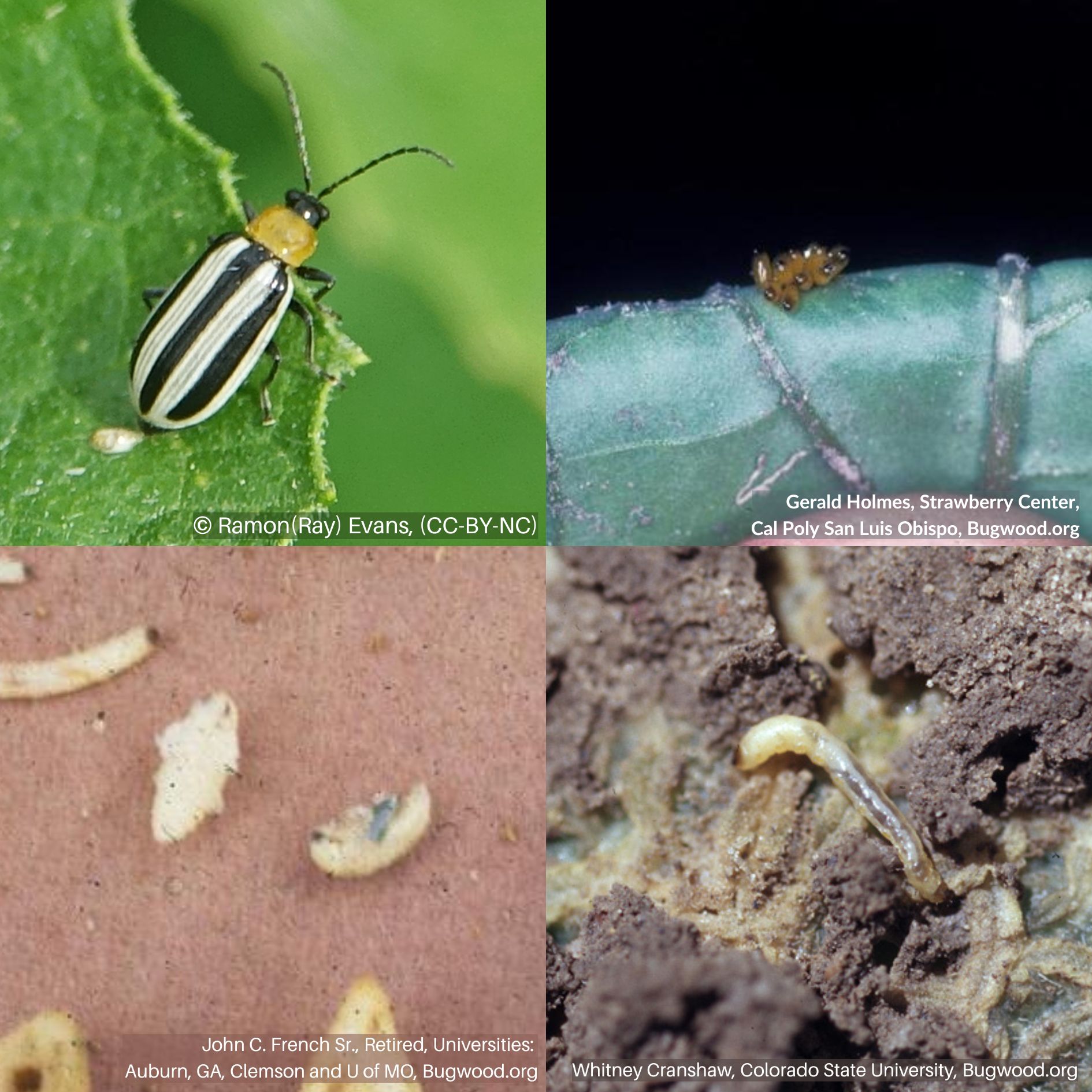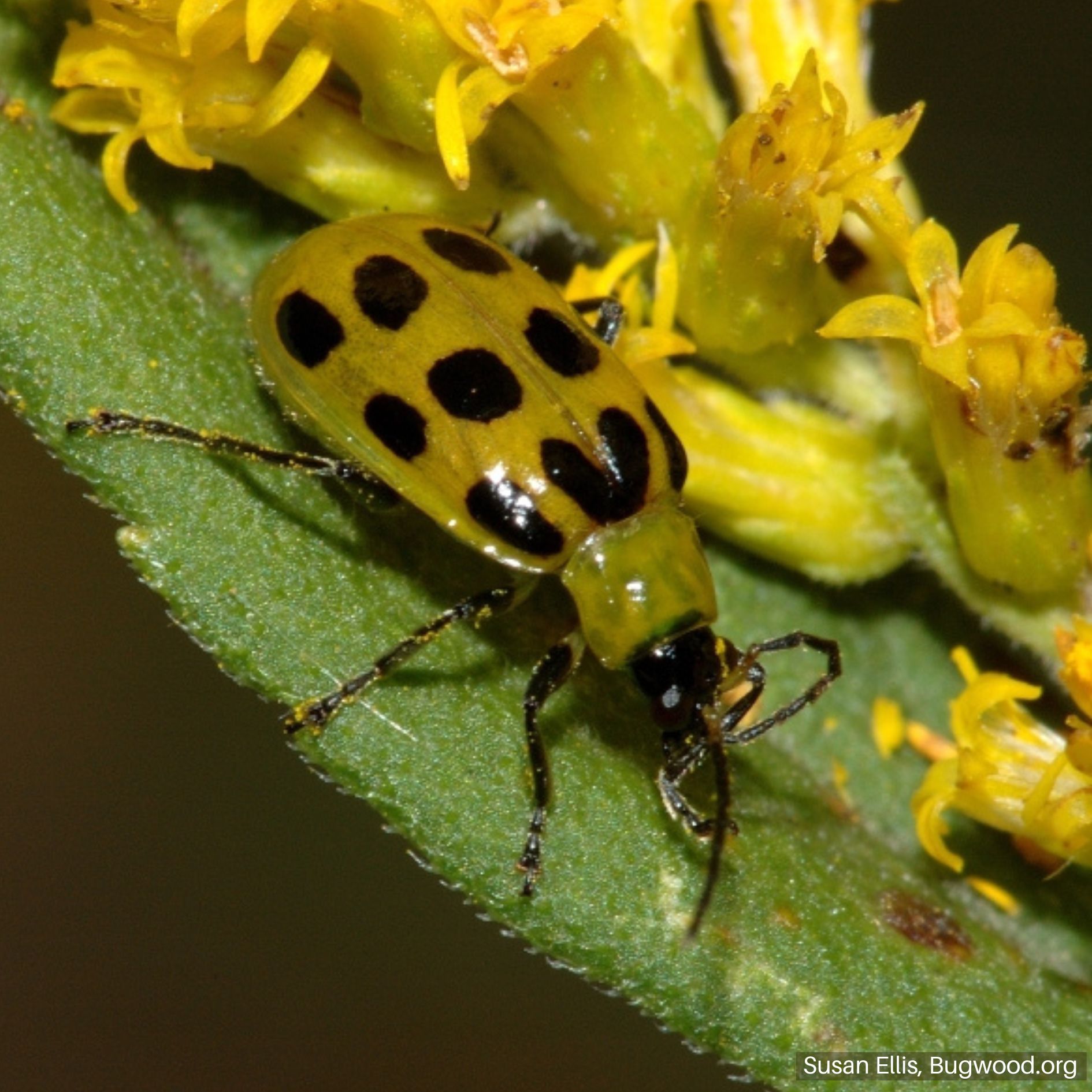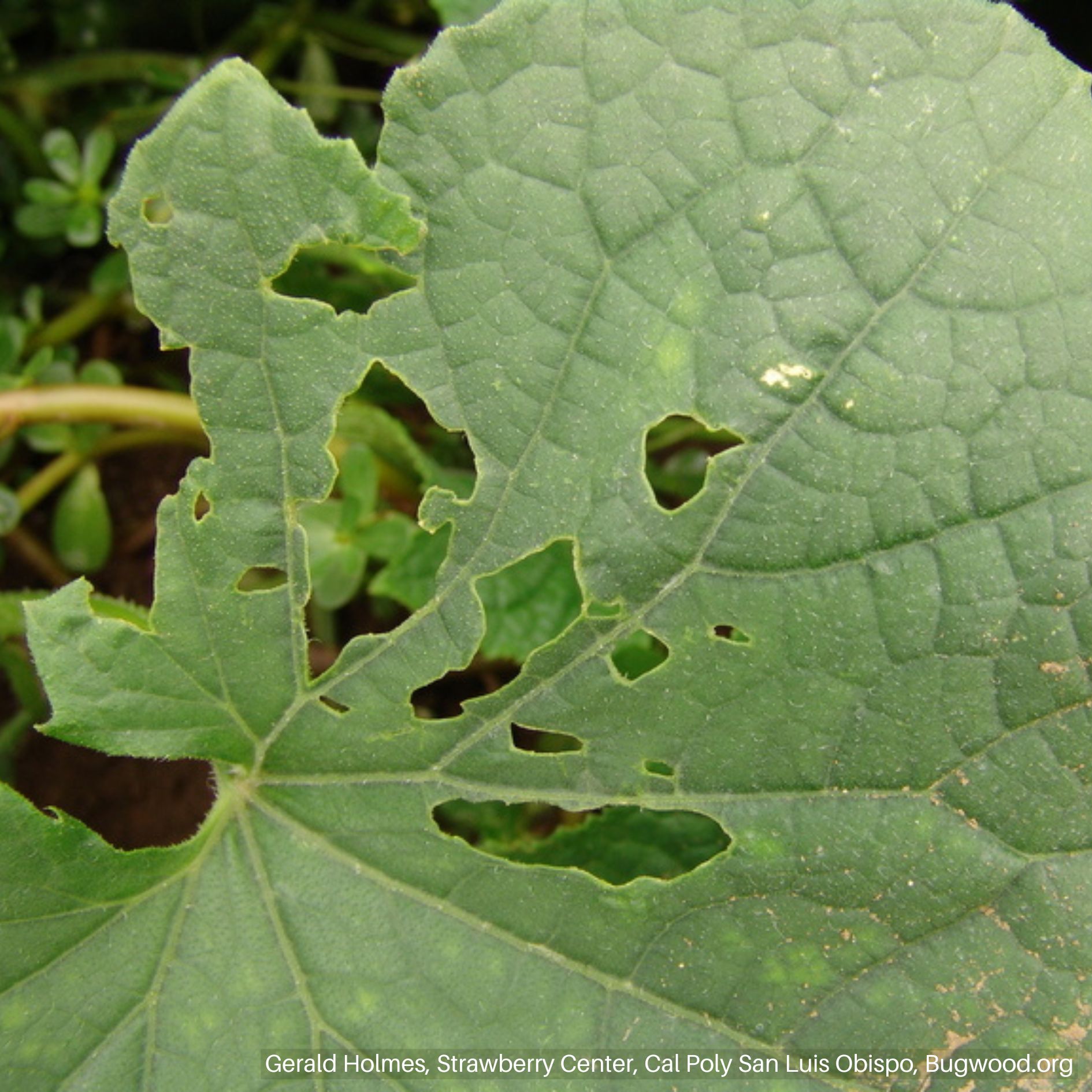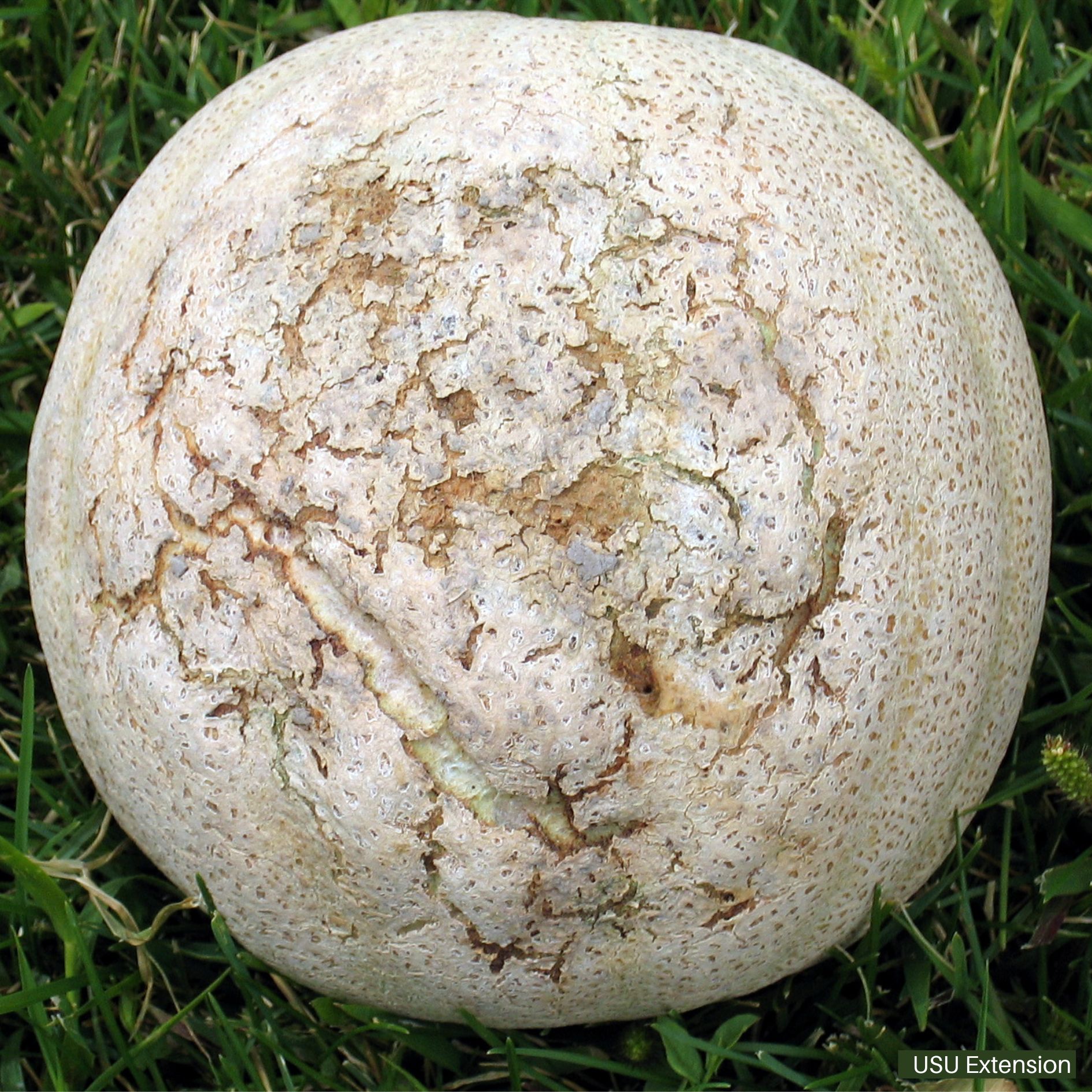Western Striped Cucumber Beetle
Western Spotted Cucumber Beetle
 Western Striped Cucumber Beetle Life Stages
Western Striped Cucumber Beetle Life Stages
 Western Spotted Cucumber Beetle
Western Spotted Cucumber Beetle
HOSTS
- Corn
- Cucurbits
- Leafy Greens
- Legumes
- Potato
- Solanaceae Crops
DESCRIPTION
Adult western striped cucumber beetles are about 1/3 inches long, with black heads and yellow and black-striped wings. Adult spotted beetles are the same size with 12 black spots on their yellowish wings. Striped cucumber beetle can be a serious pest of cucurbits in Utah, while the spotted cucumber beetle is a minor pest. Adults of both species feed on leaves, but only striped beetles feed on the fruits. Larvae are 1/3-1/2 inch long, with white to yellowish bodies, brown heads, and three pairs of brown legs. Pupae are about 1/4 inch long, and yellowish-white.
BIOLOGY
Egg | Larva | Pupa | Adult
The beetles spend the winter in protected sites near agricultural fields and home gardens (under plant debris, in wooded areas, in crevices of buildings and fence posts, etc.). They become active in spring when temperatures rise above 50 °F. They will then feed on pollen, nectar, and blossoms until moving to a preferred host plant. Adults can fly long distances (up to 500 miles in high-altitude air currents). After mating in the spring, females lay anywhere from 200-1,200 eggs in moist soil at the base of cucurbit plants. Early in the season, larvae feed exclusively on roots, but will also feed on the rinds and flesh of cucurbit fruits when available. Larvae require about 15 days to complete development before pupating in the soil. Two summer generations of adults occur in northern Utah.
In addition to direct feeding injury, cucumber beetles vector plant diseases, such as bacterial wilt, squash mosaic virus, and others. Bacterial wilt has not been detected in Utah, but squash mosaic virus does occur.
SYMPTOMS
- Feeding scars on soft rinds of fruits, especially the undersides.
- Holes in stems and leaves.
- Destroyed flowers.
SCOUTING
Monitoring is a critical part of any cucumber beetle management strategy.- All above-ground parts of the plant should be checked regularly, including the underside of leaves and base of the stems.
- Newly emerged or transplanted cucurbits should be scouted two or three times per week, since beetle feeding can rapidly kill small plants.
- Weekly scouting is sufficient on larger plants.
- Utilize yellow sticky traps when populations are high.
GENERAL MANAGEMENT
- Hand-pick cucumber beetles from plants. They can be squashed or drowned in a bucket of soapy water.
- Plant less susceptible varieties of crops when available.
- Place row covers or fine-mesh netting over plants in gardens and small acreage crops.
- Use mulches reduces the direct contact between the soil fruits, therefore limiting the feeding damage on fruits.
- Destroy crop residue as it can host overwintering cucumber beetles.
INSECTICIDES
Insecticides can be effective for control of cucumber beetles, but should not be used as the first or sole management tool. Click here to view insecticide options.



